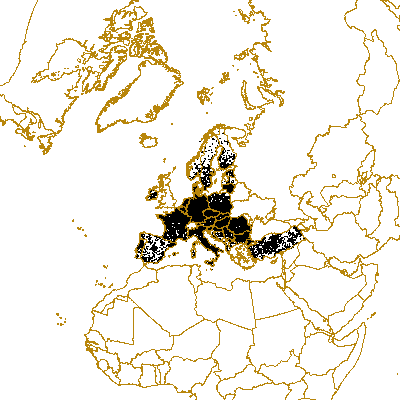population
Type of resources
Available actions
Topics
INSPIRE themes
Keywords
Contact for the resource
Provided by
Years
Formats
Representation types
Update frequencies
status
Scale
Resolution
-

This dataset consists of the LandScan global population database of 2008 (grid in WGS84 with a 30" resolution) clipped to Europe and processed in order to match a LEAC grid (projection EPSG 3035 with a spatial resolution of 1km²). Content: population count per grid cell.
-

This dataset contains the number of inhabitants per km² for the reference year 2006 and located within the Grid_ETRS89-LAEA_1K. The data set should be referred to GEOSTAT_Grid_POP_2006_1K. The dataset is compiled from the following data sources: aggregated residential population for the year 2006 (AT, SE, FI, SI, NL); estimated residential population for the year 2006 based on mixed national sources (EE, PT, FR, NO, PL, UK (England, Wales)); disaggregated residential population for the year 2006 using using population statistics at LAU2 level for 2006 as data input and Soil Sealing and Corine LC 2006 (BE, BG, CH, CZ, DE, EL, ES, HU, IE, IS, IT, LI, LT, LU, LV, MT, RO, SK, UK (Scotland, Northern Ireland) as ancillary data for the disaggregation. No data available for CY due to absent LAU2 data for Cyprus for the reference year 2006. The dataset is based on a product of the GEOSTAT project which is supported by the European Commission and the European Forum for Geostatistics EFGS. This abstract is based on the abstract provided with the original dataset (CSV file).
-

Changes between UMZs in 2000 and UMZs in 2006 using CLC version 13. Most changes are Positive changes, understood as areas of urban sprawl (i.e. new UMZ areas between 2000 and 2006), while negative changes describe the reduction of a certain UMZ between 2000 and 2006 (warning: some negative changes might be due to different interpretations between 2000-2006).
-

A UMZ is defined as a "set of urban areas laying less than 200 m apart". Urban areas have been selected from Corine Land Cover 1990, version 13, by means of a complex methodology explained below.
-

A UMZ is defined as a "set of urban areas laying less than 200 m apart". Urban areas have been selected from Corine Land Cover 2006, version 13, by means of a complex methodology explained below.
-

Changes between UMZs in 1990 and UMZs in 2000 using CLC version 13. Most changes are Positive changes, understood as areas of urban sprawl (i.e. new UMZ areas between 1990 and 2000), while negative changes describe the reduction of a certain UMZ between 1990 and 2000 (warning: some negative changes might be due to different interpretations between 1990-2000).
-

LandScan Global Population Database 2012. Population counts at 30 arc second resolution. Detailed information are to be found in cover_letter_ls12.pdf.
-

LandScan Global Population Database 2009. Population counts at 30 arc second resolution.
-

LandScan Global Population Database 2011. Population counts at 30 arc second resolution. Detailed information are to be found in cover_letter_ls11.pdf.
-

A UMZ is defined as a "set of urban areas laying less than 200 m apart". Urban areas have been selected from Corine Land Cover 2000, version 13, by means of a complex methodology explained below.
 RUC Geo-Data catalogue
RUC Geo-Data catalogue